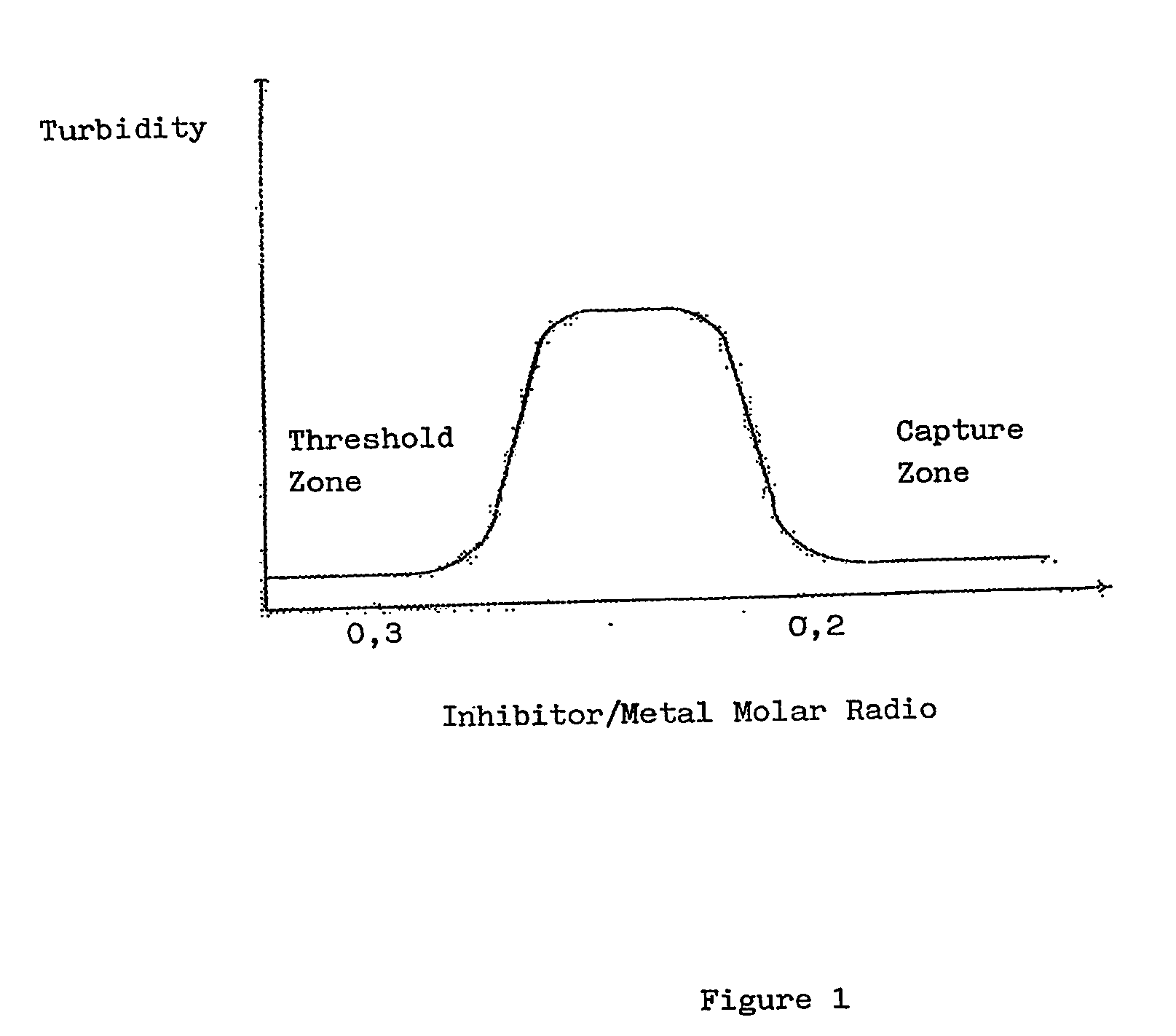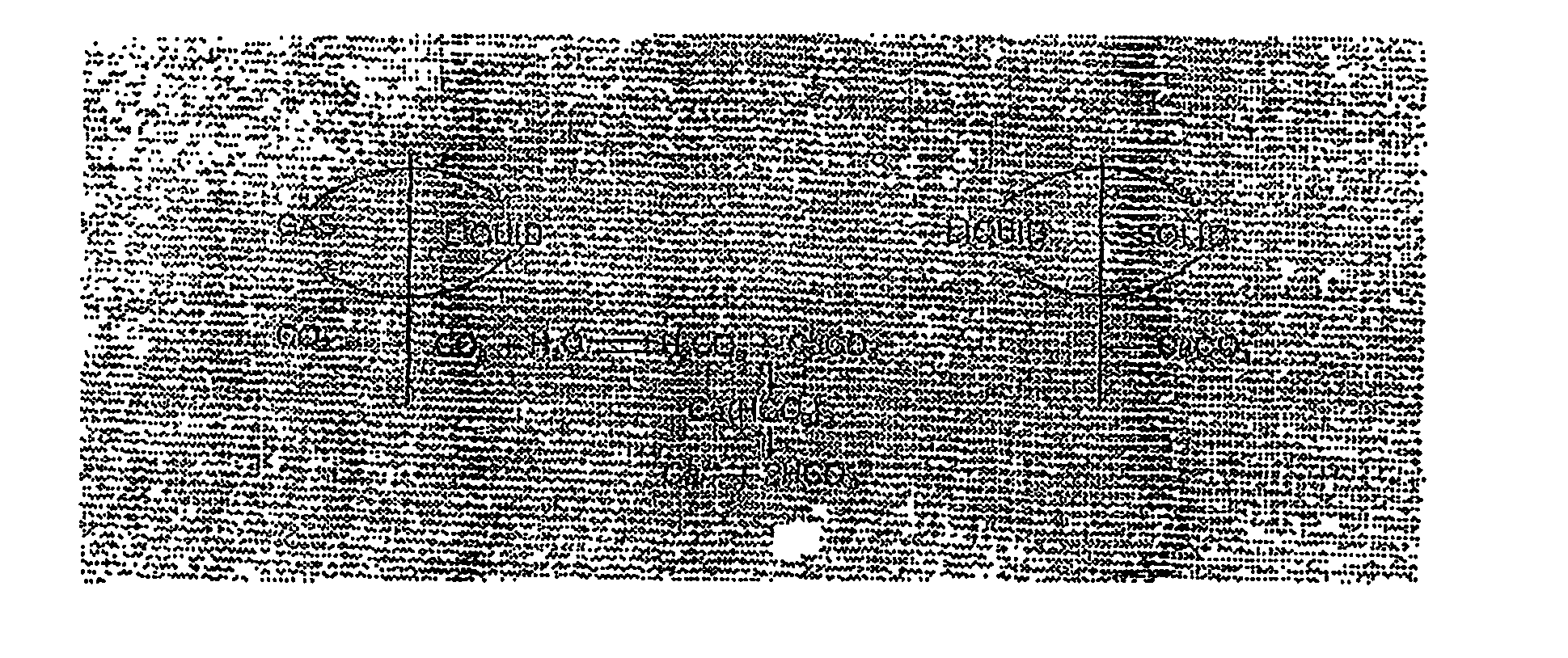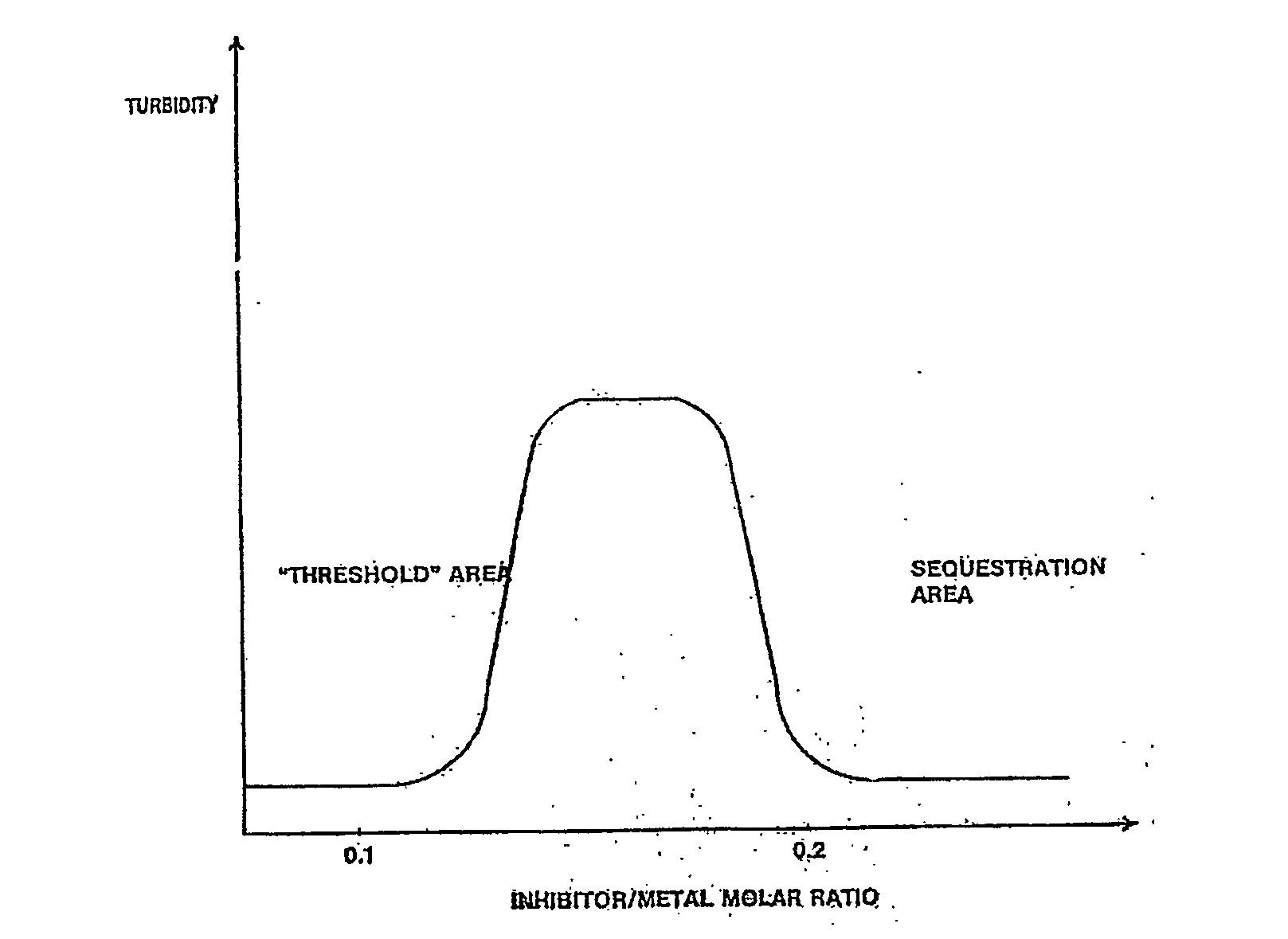Polyaminomethylenephos phonate derivatives
a technology of polyaminomethylenephos and derivatives, applied in the field of phosphonates, can solve the problems of disturbing the regularity of its growth, uneconomical elimination, and sometimes disastrous effects of uncontrolled precipitation, and achieve the effect of reducing both the quantity of water used and the environmental impa
- Summary
- Abstract
- Description
- Claims
- Application Information
AI Technical Summary
Benefits of technology
Problems solved by technology
Method used
Image
Examples
example 2
[0080] Into a suitable reaction vessel 292 g of triethylenetetramine were charged.
[0081] Under stirring acrylonitrile was than added stepwise at such a rate that, with external cooling applied, the temperature did not exceed 50° C.
[0082] 212 g of acrylonitrile had been added over a period 2 hours. The resultant product was than converted in the phosphonomethylated derivates according to Mannich's reaction.
[0083] With the same synthetic path is possible to obtain β cyanoethyl derivates of linear or branched polyamines or mixture of them in a right ratio.
example 3
[0084] Into a suitable reaction vessel 292 g of triethylenetetramine were charged
[0085] Under stirring 488 g of 1,3-propane sultone, dissolved in 1140 g of methanol, was added dropwise at a tempearture between 40°÷50° C. After 2 hours, the methanol was removed by evaporation to dryness and the residue dissolved in water. The resultant product was than converted in the phosphonomethylated derivates according to Mannich's reaction.
[0086] With the same synthetic path is possible to obtain N-(sulfo propane)amino derivates of linear or branched polyamines or mixutre of them in a right ratio.
[0087] Other compounds of these invention can be prepared according to the procedure above describe using epichlorohydrin or other different oxiranes derivates instead of 1,3 propane sultone.
example 4
[0088] Into a suitable reaction vessel 234 g of compound of example 1 were added to a 70% phosphorous acid solution (478 g) and 32% of hydrochloric acid (342 g). The mixture thus obtained was heated to reflux, 340 g of 37% aqueous formaldehyde solution was added phosphorous acid solution (478 g) and 32% of hydrochloric acid (342 g). The mixture thus obtained was heated to reflux, 340 g of 37%, aqueous formaldehyde solution was added dropwise in the course of ca 1 hr and the reaction mixture was kept at reflux temperature for 1 additional hr. 300 g volatiles substances was then removed from the reaction mixture by distillation. The final product obtained was a viscous fluid having an active substance of 50%. Infrated analysis of the product showed the presence of methylenephosphonic amine groups, while P31 NMR analysis indicate that at least 90% of the amine groups had been phosphonomethylated. The impurities include unreacted phosphorous acid, phosphoric acid and other unidentified ...
PUM
| Property | Measurement | Unit |
|---|---|---|
| reaction time | aaaaa | aaaaa |
| temperature | aaaaa | aaaaa |
| temperature | aaaaa | aaaaa |
Abstract
Description
Claims
Application Information
 Login to View More
Login to View More - R&D
- Intellectual Property
- Life Sciences
- Materials
- Tech Scout
- Unparalleled Data Quality
- Higher Quality Content
- 60% Fewer Hallucinations
Browse by: Latest US Patents, China's latest patents, Technical Efficacy Thesaurus, Application Domain, Technology Topic, Popular Technical Reports.
© 2025 PatSnap. All rights reserved.Legal|Privacy policy|Modern Slavery Act Transparency Statement|Sitemap|About US| Contact US: help@patsnap.com



